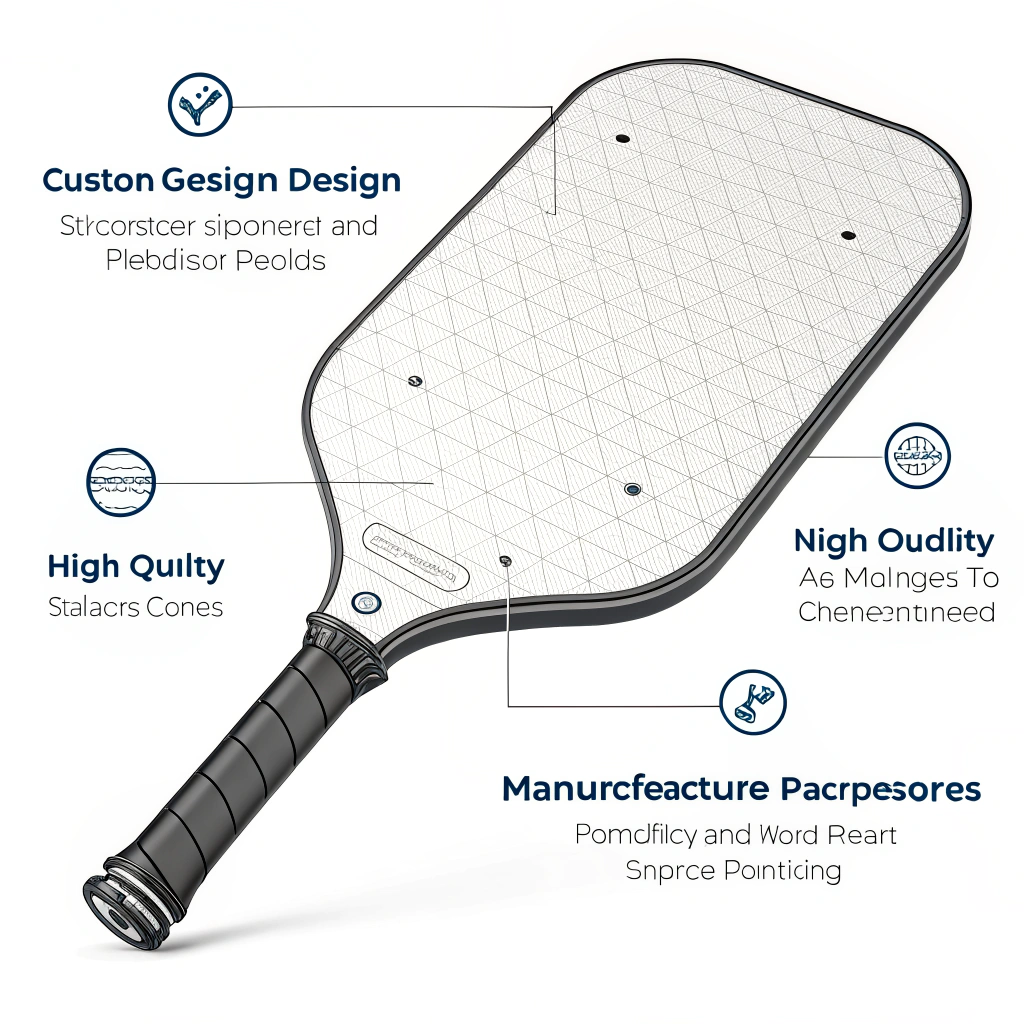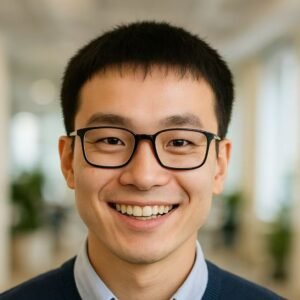Thermoforming is an advanced production process that allows for highly detailed, custom-designed pickleball paddles with excellent durability and precision, making it a competitive choice over traditional hot pressing and cold pressing methods.
In the world of pickleball paddle production, manufacturers face the challenge of balancing performance, durability, and cost-effectiveness. Thermoforming1 has emerged as a versatile production method, particularly for companies that require high quality and customization. Compared to hot pressing and cold pressing, thermoforming offers unique benefits for creating intricate designs and ensuring material consistency during high-volume production.
Thermoforming involves heating the paddle material until it reaches a softening point and then using specialized molds to shape the paddle. This process is ideal for producing complex paddle geometries that require precise material distribution. For B2B buyers, especially procurement managers and operations directors evaluating production partners, understanding the advantages and limitations of thermoforming is essential.
To better serve your production needs, consider the following comparison of the three major manufacturing techniques:
| Feature | Thermoforming | Hot Pressing | Cold Pressing |
|---|---|---|---|
| Process Mechanics | Heating, softening, and molding via specialized molds | Heating and applying mechanical pressure | Room temperature shaping under high mechanical pressure |
| Material Complexity | Excellent for intricate designs and custom layouts | Suitable for high-strength, durable but simple shapes | Provides precision control over thickness and structure |
| Production Speed | Slower cycle time; higher equipment cost for premium molding | High efficiency; optimized for large-scale production | Longer production cycles; requires precise control |
| Impact on Material Properties | Maintains balanced properties; can optimize weight distribution | Can alter material properties; may affect paddle feel | Preserves natural material feel; better for ball responsiveness |
| Customization Potential | High customizability for unique paddle designs and specifications | Limited; shapes are generally standard | High precision but with less flexibility in complex design |
Thermoforming stands out particularly in its ability to preserve the material's inherent strength and balance. It allows manufacturers like NEX Pickleball to create paddles that meet specialized design criteria while ensuring optimal performance on the court.
For companies focused on providing a competitive edge through premium products, thermoforming offers several benefits:
-
Intricate Customization: Thermoforming enables the creation of paddles with detailed surface textures and ergonomic contours. This is especially valuable for brands that wish to offer personalized paddle designs for team branding or client-specific requirements.
-
Enhanced Structural Integrity: By using molds that evenly distribute heat and pressure, thermoformed paddles exhibit improved structural integrity and a consistent weight distribution. This precision enhances shot stability and overall performance during play.
-
Material Adaptability: Thermoforming is versatile enough to work with a range of premium materials, including Carbon Fiber2, Fiberglass3, and composite materials. Whether using 12K Carbon Fiber for superior hardness or Bamboo Core Composite for impact resistance, the method ensures that the material properties are maximized.
-
Improved Vibration Reduction: Paddle stability is largely influenced by how vibrations are managed upon ball impact. Thermoformed paddles benefit from a design that minimizes vibration, leading to better shot control and more accurate play.
Thermoforming begins with heating the paddle material to a precise softening point. During this stage, it is crucial to maintain uniform temperature control, ensuring that the material becomes pliable evenly throughout. Once the material reaches the optimal state, it is transferred into a mold where hydraulic or mechanical systems apply pressure to secure the final shape.
This process offers manufacturers the flexibility to produce paddles with varying thicknesses, grip sizes, and surface textures. Many manufacturers use a combination of advanced thermoforming machines and computer-aided design (CAD4) to achieve the accuracy required for high-performance products.
- Material Selection: Choose from high-performance materials such as various types of carbon fiber or composite cores depending on the desired paddle characteristics.
- Pre-Heating: Uniformly heat the raw material to the predetermined temperature.
- Molding: Transfer the heated material into a custom-designed mold to shape the paddle.
- Cooling and Curing: Allow the paddle to cool gradually, solidifying the structure and preserving the design details.
- Finishing: Surface treatments and ergonomic adjustments are made to enhance grip, ball control, and overall aesthetic appeal.
Manufacturers may integrate quality control systems throughout each stage to ensure that every paddle meets strict performance standards. Such attention to process detail is critical for maintaining a competitive edge in the B2B sports equipment market.
While thermoforming offers significant advantages, there are also factors that customers should be aware of:
- Production Cycle Time: Compared to hot pressing, thermoforming typically involves longer production cycles due to the extended heating and cooling phases. However, this is offset by the improved quality and design flexibility.
- Equipment Investment: The need for advanced thermoforming machinery and precision molds can lead to higher initial capital expenditure. For companies with long-term production strategies, this investment translates to superior product quality and reduced defect rates.
- Process Complexity: Achieving consistent results in thermoforming demands rigorous control over material properties, temperature, and pressure. Manufacturers must invest in staff training and robust quality control measures to ensure the process remains stable.
For procurement managers, understanding these factors is pivotal in balancing short-term production goals with long-term product excellence and customer satisfaction.
At NEX Pickleball, we have integrated thermoforming into our manufacturing processes to produce high-performance pickleball paddles that meet the demands of professional and recreational players alike. Our commitment to precision manufacturing5 is demonstrated by the rigorous standards we uphold through our advanced thermoforming processes.
A major sports retailer sought a line of custom-designed paddles with intricate surface patterns and varied grip sizes tailored to different player profiles. Leveraging our thermoforming process, we were able to:
- Develop custom molds based on the exact ergonomic specifications required.
- Utilize a composite blend of T300 Carbon Fiber and Fiberglass to maximize both strength and control.
- Ensure that each paddle exhibited a uniform balance and minimized vibration, enhancing overall gameplay stability.
This case not only solidified our reputation as a reliable OEM partner in the sports equipment sector but also served as a testament to the benefits of advanced thermoforming in producing market-leading products.
For businesses evaluating manufacturing partners for high-performance pickleball paddles, consider the following guidelines:
-
Performance Needs: Determine the key performance attributes required by your end-use customers. If shot accuracy, vibration reduction, and precise weight distribution are priorities, thermoforming processes are highly advantageous.
-
Product Customization: Assess the level of design intricacy needed. If customization is a major selling point, thermoforming can deliver more detailed and tailor-made products compared to the more standardized shapes of hot pressing.
-
Cost vs. Quality Considerations: While the initial cost and production cycle for thermoforming may be higher, the long-term benefits of reduced product defects and enhanced performance often justify the investment. Analyze the total cost of ownership by comparing material waste, maintenance, and quality assurance costs associated with each process.
-
Scalability: Evaluate the scalability of the production process. Although hot pressing is faster, thermoforming is well-suited for businesses looking to differentiate their products through unique design elements and precision engineering.
-
Supplier Expertise and Quality Control: Ensure that your manufacturing partner has a strong track record in using advanced production techniques like thermoforming. Request detailed documentation about their quality control measures and production process to make an informed decision.
| Decision Point | Thermoforming | Hot Pressing | Cold Pressing |
|---|---|---|---|
| Need for intricate designs | Ideal for complex, custom geometries | Limited design flexibility | Moderate, with high precision |
| Vibration reduction | Excellent shock absorption design | Good impact resistance but can feel harsh | Maintains natural feel but may lack intricate details |
| Production speed | Slower but with high customizability | Fast, mass production is possible | Moderate speed, high precision |
| Equipment investment | High initial cost for advanced molds | Lower investment for standard molds | Requires precision equipment |
Choosing the right process can give your business a competitive advantage by offering superior products in a crowded market. For companies like yours, which are focused on performance and innovation, thermoforming represents a strategic investment toward enhanced product quality and customer satisfaction.
Thermoforming stands out as a superior manufacturing technique for companies aiming to produce high-performance, custom pickleball paddles. Its ability to effectively balance the trade-off between design complexity and material strength makes it an essential process in modern paddle manufacturing. For procurement managers evaluating production partners, the decision should consider quality, design flexibility, and long-term cost benefits.
NEX Pickleball is dedicated to leveraging the latest thermoforming technology to deliver paddles that exceed performance expectations. By understanding the nuances of thermoforming and comparing it with other production processes like hot pressing and cold pressing, you can make an informed decision that aligns with your company’s strategic goals.
We invite you to get in touch with our team for more detailed insights and a tailored consultation on how advanced thermoforming technology can transform your product offerings. Let us help you achieve extraordinary performance and customer satisfaction in every paddle produced.
Are thermoformed pickleball paddles better?
Thermoformed pickleball paddles are designed to reduce vibrations and enhance shot stability. This technology minimizes energy loss upon ball impact, providing improved accuracy and control that can lead to better overall performance on the court.
Are Joola pickleball paddles thermoformed?
Certain models, such as the Joola Scorpeus paddle, are indeed manufactured using thermoforming techniques. This process enables the creation of complex shapes and enhances paddle stability, making them suitable for advanced players seeking a blend of performance and precision.
-
Thermoforming: Click to learn how this manufacturing process uses heat and specialized molds to shape materials, offering high customization and material consistency beneficial for bespoke production needs. ↩ ↩
-
Carbon Fiber: Click to explore the properties of carbon fiber, a lightweight and strong material used in high-performance manufacturing that enhances durability and performance. ↩ ↩
-
Fiberglass: Click to understand how fiberglass works as a reinforcing material in manufacturing, offering excellent strength-to-weight ratios and versatility in composite products. ↩ ↩
-
CAD: Click to delve into computer-aided design (CAD) and how its integration in manufacturing improves precision, efficiency, and design innovation in product development. ↩ ↩
-
precision manufacturing: Click to discover the significance of precision manufacturing in delivering products with consistent quality, exact specifications, and minimal tolerances crucial for high-performance applications. ↩ ↩







